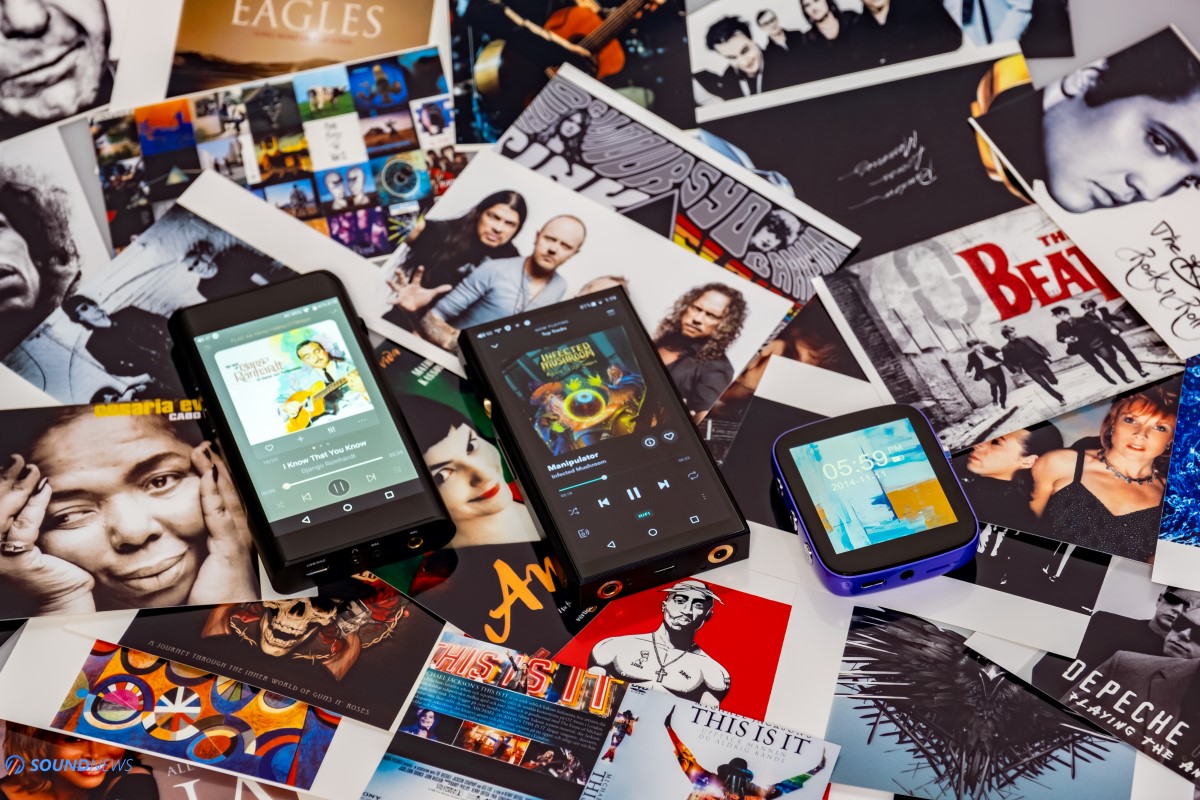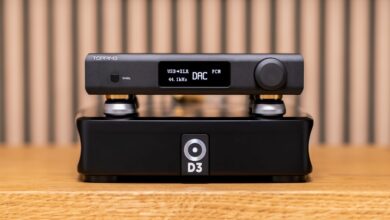
My Video Review:
Shanling is known to be making portable digital audio players for quite some time now. M3 digital audio player that debuted in 2014 came like a storm, even at that time it had DSD playback capabilities, it had a big battery capacity, an interesting Cirrus Logic chipset, lots of power under its belt and a very unique design with a huge volume knob that resembled big integrated amplifiers. Next year they launched a smaller M2 DAP that had big advancements in terms of user interface, then they launched their flagship M5 and since then, they never really stopped tinkering with small and portable music players. What I liked the most about them was not all those cool specs and design decisions but their actual price. They were always very affordable; at their core they were consumer oriented but with audiophile technology inside.
Take the M1 and M0 as examples, they are small and really pocketable devices, have good specs, powerful Bluetooth capabilities, are made out of metal and yet are very affordable, together those two are cheaper than most decent headphones I know of.
The DAP that I will be testing today is their flagship device (that is until M30 hits the market) called M6, that has one unique feature others still do not have, some very cool specs and of course that famous Shanling engineering behind it. We already tested their entry level Q1 that really surprised us on how many features can be fit inside a device the size of a match box, but it’s time hearing for ourselves the best Shanling can offer as of right now.
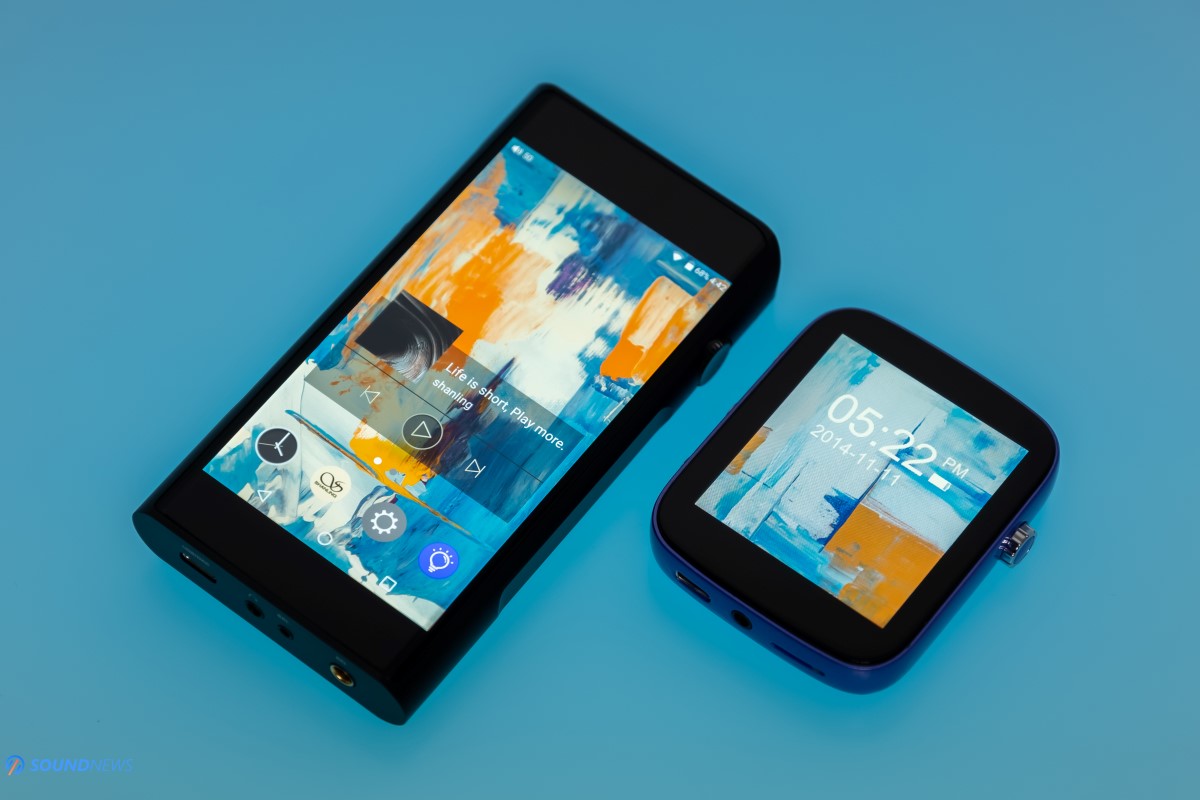
Unboxing Experience
M6 is coming in a very cool packaging, in a very modern and unusual looking box. The smaller sour cherry colored box has some interesting cut-outs and angles, it’s clear that Shanling wanted to make an unique unboxing experience. M6 is sitting surrounded by lots of foam with a velvety finish. Underneath it there are two smaller back boxes where you can find a high-quality USB Type-C cable wrapped in a textile jacket, two screen protectors that you can apply on the displays and on its back, a Quick Start Guide and a warranty card.
Unfortunately, there isn’t any protective case (TPU, faux or real leather) in the box. Shanling is offering separately a real-leather case for $35 and sincerely, looking at M6 that is surrounded by lots of glass on the front and back, it is a must buy accessory.
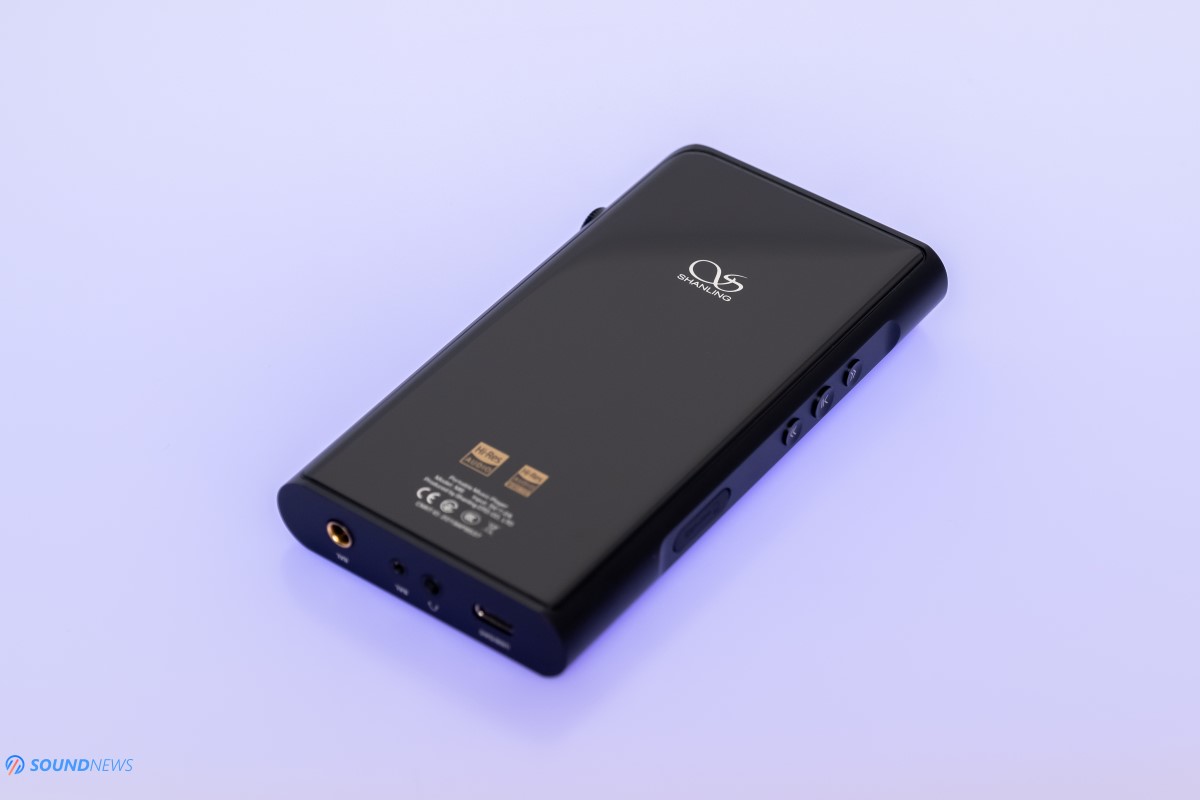
Design & Build Quality
I find it handsome looking, that has its own design language. I really like that Shanling doesn’t copy anyone and has its own way of expression. The upper right rounded corner reminds that this is a still a Shanling DAP as the rest of the M line has the same rounded corner up there. I like than those 3 buttons are flushed and aren’t sticking out that much. I also like that it has only 3 buttons and a volume wheel, it’s so easy remembering where is where and what it’s doing. On the back the Shanling, Hi-Res Audio and Hi-Res Audio Wireless logos are underneath the glass that are adding a touch of proudness. M6 is without a doubt the cleanest and the most minimalist looking DAP that I have tested.
The buttons have a firm press and are sitting really tight, the same can be said about the volume wheel, I don’t see any dust building up around that wheel and I am seeing only high tolerance machining. I can hardly turn the volume with just a single thumb, I need two of them for that so in the pocket it will not turn by itself so easily.
The aluminum case seems to be an uni-body design made from a single piece of aluminum with just two glass sheets on the front and on the back.
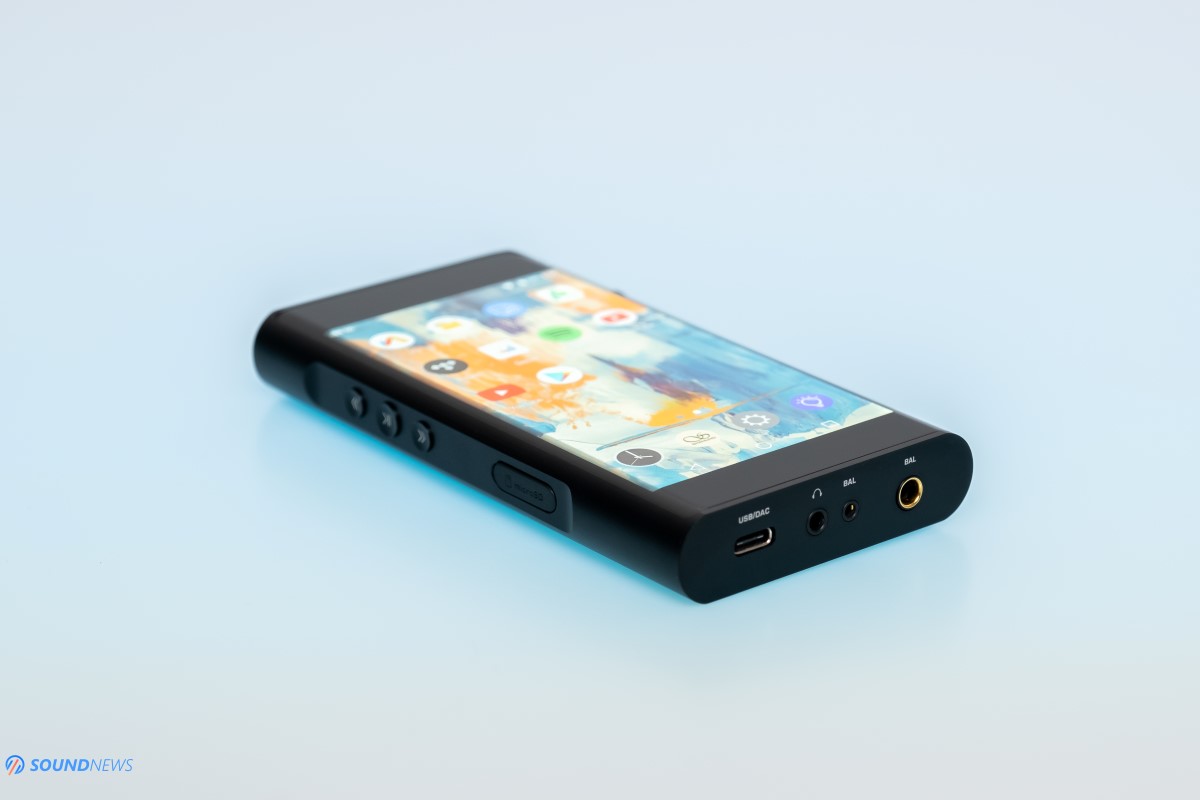
Buttons & Layout
The volume wheel also works as an On/Off button that cleared up a bit of space. You can see a small circle above the wheel and once you engage Bluetooth, the LED color of that circle will tell you about the BT codec that is being used. On the left, besides the Play/Pause, Next and Previous buttons you can spot a single microSD card tray covered by a plastic door – that is the only piece of plastic I can spot.
Shanling moved all its inputs and outputs on the bottom for that clean minimalist look. From left to right there is your USB type-C for charging, for data transfer or for using it as a desktop or portable DAC, there is your normal 3.5mm jack, followed by two balanced outputs coming in 2.5mm and 4.4mm flavors. I’m really glad that Shanling added the 4.4mm Pentaconn jack, since it is currently my favorite balanced connector that I wish more manufacturers would embrace.
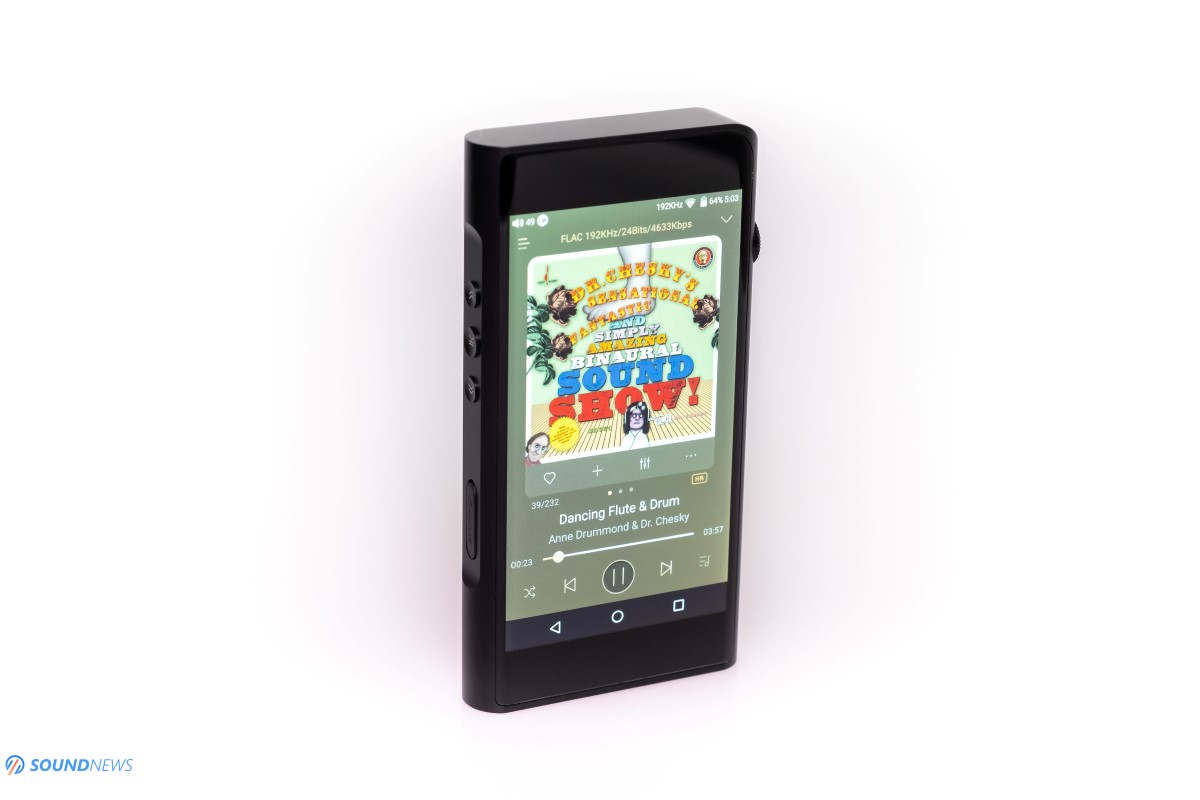
Display
You can see the glass sheets that are identical on the front and back but that doesn’t mean the display is having the exact same size. It was a clever design decision to make it look bezel-less. However, there is about 1.2 cm of space on top and bellow the display assembly and once you power it on, everything becomes clear.
M6 is using a small-ish 4.7” multi-touch display with a decent 720P resolution. It’s an IPS panel that was provided by Sharp. Viewing angles are good, brightness is good too, even resolution is decent enough for some basic web browsing, for music streaming using 3-rd party apps or just for playing around with it. Do note that a higher resolution screen or a bigger screen size will seriously decrease the battery life of M6 and this is the last thing you’d want in an advanced Hi-Res music player.
Battery
Shanling went with a fairly big 4000 mAh battery that offers around 12 hours of playback on the 3.5mm jack and up to 9 hours on both the 2.5 mm and 4.4 mm balanced jacks. M6 supports the newest Quick Charge 3.0 but you will need to purchase such a charger separately. I happen to have one and I was able to fully charge it in less than 1 hour and a half.
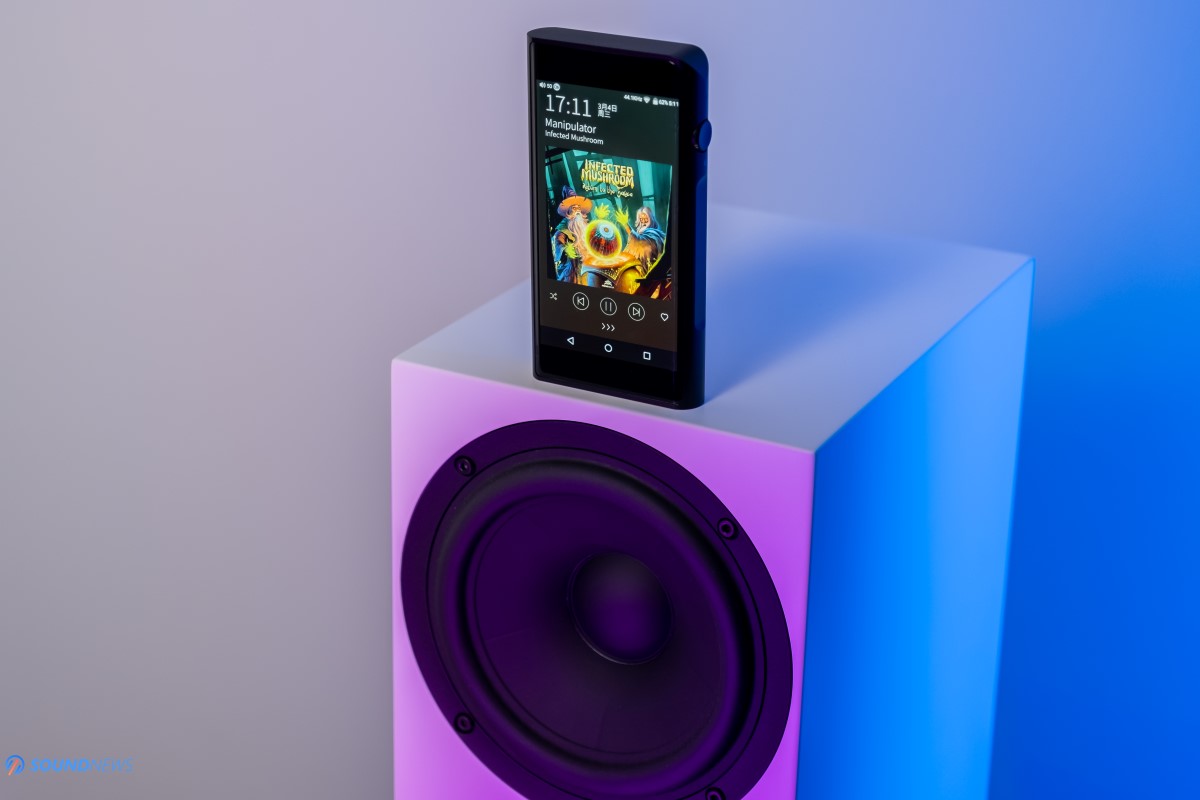
Under the hood of M6
M6 rocks the famous Snapdragon 430, which might sound like a midrange SoC for your smartphone, but for a DAP it is among the fastest and most reliable ones. This one is an 8-core CPU with a clock speed than can reach 1.4 GHz. Shanling put inside the biggest RAM capacity of any DAP, at 4Gb you can be sure that M6 is a multitasking champ even while streaming some Hi-Res content via Wi-Fi and then sending all that to a wireless headphone via LDAC. M6 works great even while listening to music and browsing tens of web-pages in the background. As for internal memory, M6 is having 32 Gb of music storage and if you would like to expand it, just use a microSD card up to 2 Tb in size.
I’m super glad to report that the International Version of M6 supports the Google Play Store, from which you can install any app you could possibly want, including games, streaming apps like Tidal, Spotify, Deezer and so on, you can install YouTube, mail clients and anything you’d want really. Tidal Hi-Fi works great for me, I can even listen to my offline music which is great too and so far I don’t have any complaints.
At the heart of M6, two AK4495SEQ DAC chips which are working in dual-mono configuration are working hard in achieving that reference 126 dB of Dynamic range. This particular chip, together with slightly lower quality AK4493 are part of a newer generation of converters that succeeded the oldie but goodie AK4490 chip – that was being used for the past years in a lot of good stuff. I am very familiar with AK4490, 4493, 4497 and 4499 designs which I tested multiple times in portable and desktop forms, but AK4495 is a first for me so I am quite excited. Obviously, the DAC chip tells me only a very small part of a much bigger story as everything else is as important in the analog or digital domain, so let’s see what other surprises Shanling prepared for us.
If you want to squeeze the best a DAC chip can offer, it’s an unwritten rule that some precise crystal clocks will be needed together with a custom FPGA code and it seems that Shanling is following this rule. Two KDS low-noise and low-phase noise crystal clocks are being used here plus some mumbo jumbo with lots of zeroes and ones that make a nice FPGA do its job.
As for the headphone amplification duties, Shanling went with a reference tuning in a detriment of a safer or warmer tuning. Two OPA1612 op-amps are being used as low-pass filters together with some very resolute and clean sounding AD8397 op-amps will work as the final amp stage. I know both chips very well and I have fond memories of those super-transparent sounding portable headphone amps from Headamp Electronics that are powered by the same AD8397 so I already started imagining myself how M6 should perform. M6 will output up to 160mW into 32 Ohms on the 3.5mm output and up to 350mW in the same load on both balanced outputs. Output impedance is a very healthy one – at less than 2 Ohms and following the rule of eights, any headphone or IEM with 16 Ohms or more should work just perfect with it.
Here comes some extra juicy stuff that I like: to have a proper power delivery and slam in the bass, some fat capacitors are needed to store some of that power and release it at the right moment. M6 uses four bigger Elna Silmic II Japanese capacitors which are currently among the best audio capacitors money can buy. Shanling went deeper and added even some fancier Panasonic Tantalum-Polymer capacitors that are adding a lot to the cots but are well worth when it comes to sonics, they will smooth out the sonics and add an additional layer of refinement.
Shanling didn’t state exactly which Bluetooth chip is being used in here, but since it can decode anything you’d want like SBC, AptX, AptX-HD, LDAC and HWA and can already tell that it must be some nicer chipset from Qualcomm. M6 can work as a sender but also as a BT receiver which is quite nice.
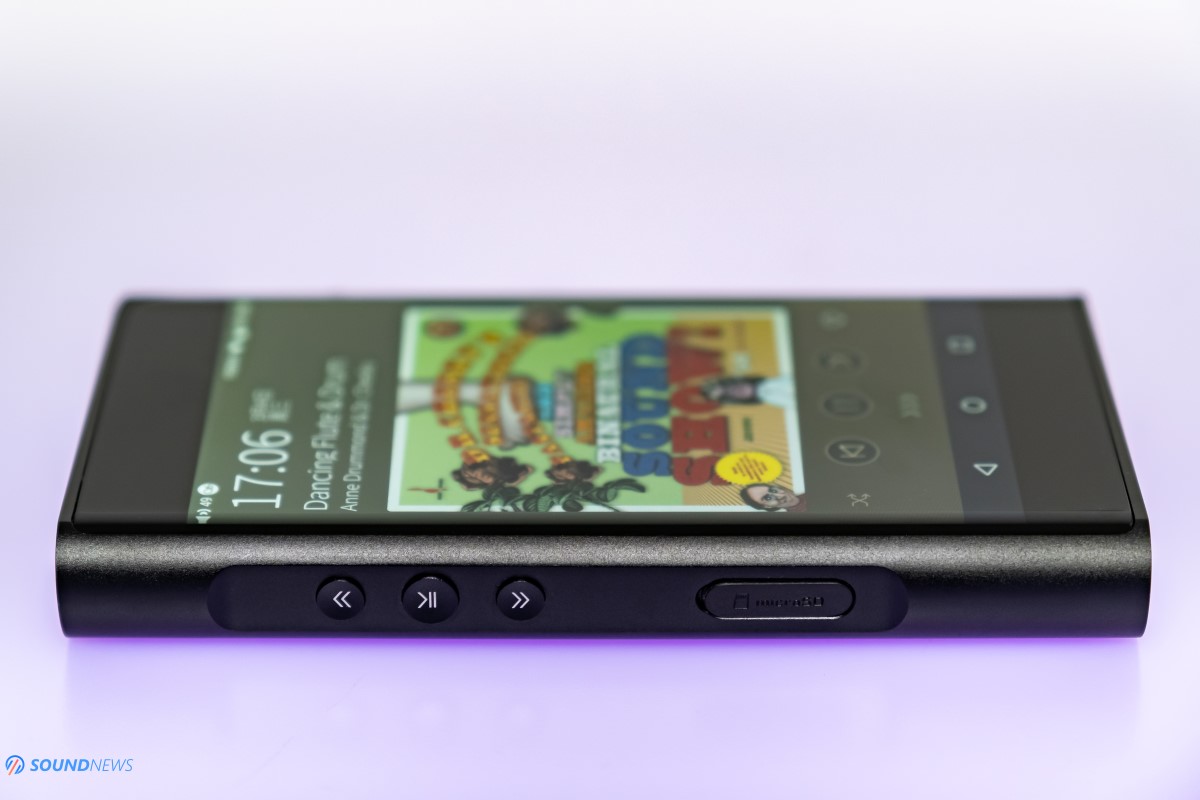
Graphical User Interface (GUI)
I will first mention that I just updated to V 2.8 which for me added some important quality of life changes like making the standard Google navigation bar visible. I do like swipes but I’m struggling without that navigation bar so it’s a godsent for me.
If you are having the International Version, then your unit will be using a fully unlocked Android system with just few tricks made by the Shanling team. For example, the built-in Android SCR (sample rate converter) was disabled for a clearer, less distorted sound. M6 is using Android version 7.1 and once you connect it to Wi-Fi via APKPure which is already preinstalled, you can download the Google Play Store and all its apps. If you access the lightbulb app (idea app) you can update it over the air (OTA), check its user manual or FAQ.
Having a custom Android interface, you will be using a lot of swipes, swiping down for example will show your brightness levels, Wi-Fi, Bluetooth connections, the audio gain, audio settings, headphone out functions, you can take a screenshot from there, enable or disable the AirPlay.
Shanling developed their own music playback software called simply Shanling Music that has all the important stuff a music player should have, you can browse by anything you would want, including by folder as I am doing, you can transfer your music wirelessly and even connect to a UPnP (NAS) server.
There are a lot of settings in this app, I like that it can play DSD files natively, not just via PCM, it has a proper EQ that starts from the 31 Hz and ends at 16 kHz and you can adjust it from -12 dB up to +12 dB.
Overall, the M6 GUI is very polished (at least on V 2.8), M6 moves fast and performs any action in an instant, I didn’t encounter stuttering even while streaming Hi-Res content via Wi-Fi or while playing DSD files natively. M6 just might be the fasted DAP that I have tested but I can’t back-up my claims since AnTuTu Benchmark is stopping for no reason at Terracotta test and is not passing that one. In my daily tasks I feel it performing at least on the same level with FiiO M11 Pro and M15 which were already the fastest DAPs I’ve tested.

Sound Performance
I. Preliminary Preparations & Impressions
In terms of audio capacitance Shanling M6 is slowly approaching the level of $1300 FiiO M15 DAP. I still remember that at first, M15 was stiff sounding and not that refined around the edges and I had the same experience with M6 but to a smaller degree. Elna Silmic II and those tantalum caps need at least few hours to settle down for the best results so I plugged a power adapter and let my music play on repeat for about ~40 hours.
Two days later I took a listen, the song that was playing when I picked it up was Nirvana – Oh Me (Unplugged in New York, 1993) so I sat and took a longer listen. That preliminary stiffness was replaced but by a smoother tempo that added a layer of refinement. I was humming together with Kurt for the rest of the song. Specially for this album, Dave Grohl exchanged his wooden drum sticks with brushes that had an interesting texture on this song, I heard them clean and defined sounding, sharp around the edges but still natural and inoffensive. M6 started showing me its true nature: a very accurate and precise and linear sound performance that doesn’t want to impress short term with a defined mid-bass or something like that. M6 impressed only long-term with its honest approach that doesn’t want to put an emphasis on anything. I mean, the music itself is an amalgam of notes and sounds, listening to 4-person band you want all of them to shine, not just a single person, M6 is exactly like that. I was also surprised by the soundstaging capabilities of M6, it is sounding outside my head all the time even with tiny IEMs inserted deep into my ear canals. M6 is impressive in terms of depth and can capture the room acoustics pretty easily. M6 is already showing a great potential and I can’t wait listening to it using my whole headphone collection from In-ears, portables and heavy-duty desktop headphones, it will not be spared.
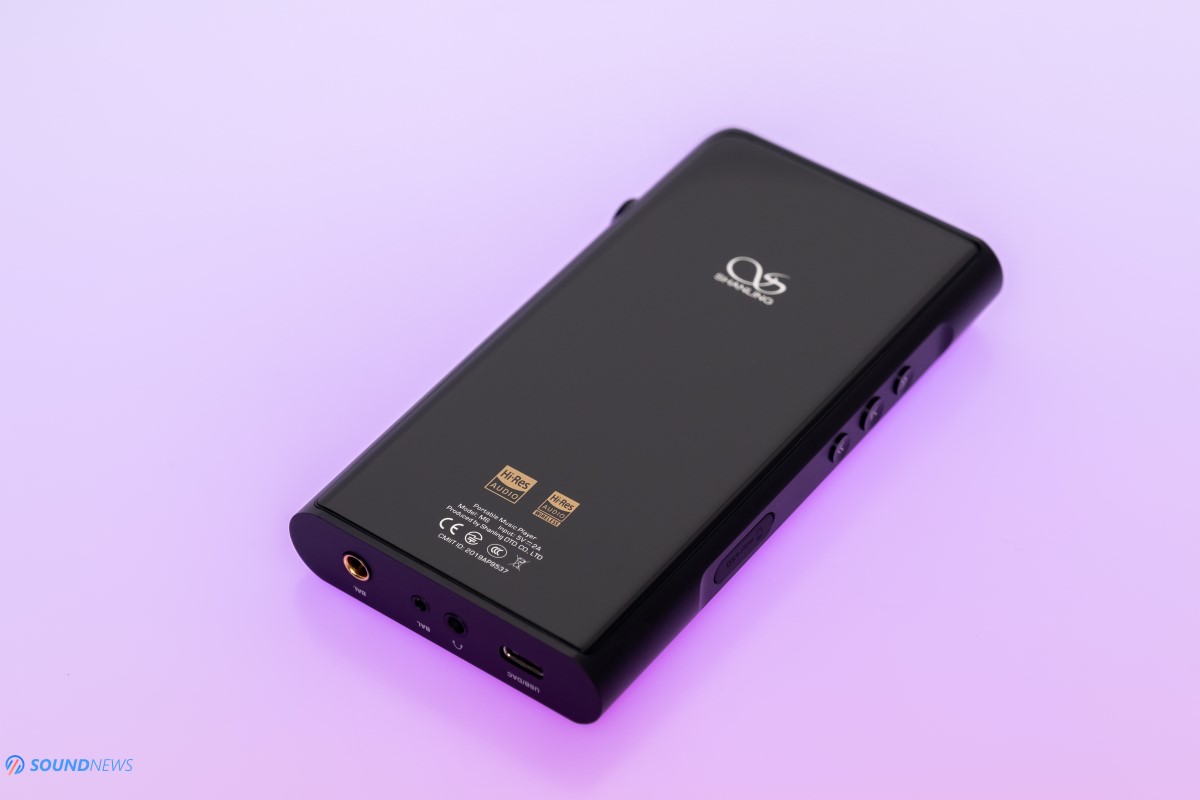
II. Connected to Sensitive IEMs
The most sensitive IEMs that I use and that can be susceptible to noise, are the FiiO FH7. By chance those are also the ones I like the most with their engaging and explosive dynamics. With the smaller Shanling Q1 – FH7 are dead silent, it wouldn’t be a surprise to hear the M6 performing the same isn’t it? With M6 on maximum volume and set on high-gain there isn’t a trace of background noise, absolutely nothing, nada. Just an overwhelming silence and a pitch-black background. Once you start listening to your music, there is an overwhelming feeling of cleanness, of an extended frequency response that carries a reference tuning. M6 impresses with its technical aspect a lot more than with its musical presentation. If with the entry level Q1 I was experiencing a vivid and colorful sound reproduction that chooses to be smooth and relaxed sounding almost all the time. M6 feels like a sport car by comparison, speed improved tremendously, slam is hitting me relentlessly especially on both balanced outputs. M6 is not smooth and relaxed but mostly dynamically engaging, pushing big amounts of air in an instant.
Volume wise on low gain and on the 2.5mm jack I couldn’t go higher than 55 out of 100 and on the high-gain I would be on 45 for the same sound pressure level. On Moondrop Starfield and FiiO FH1S the same story repeats itself. With any IEM I would use it with, headroom was always impressively huge, there would be a lot of volume left on tap, dynamics were really great. Driver control was among the best I’ve heard, it is very much on the same level with FiiO M11 PRO. FH7, FH1S, EN700 PRO and Starfield all sounded as punchy, ass kicking and alive, exactly as they sounded on the desktop Big Rig™.
M6 has such a e reference tuning that sometimes I am forgetting I am listening to M6 at all. It has a very “disappearing” type of sound, it’s precise, detailed, really fast but also carries a touch of naturalness and just a tad of smoothness. M6 sounds life-like without an obvious coloration.
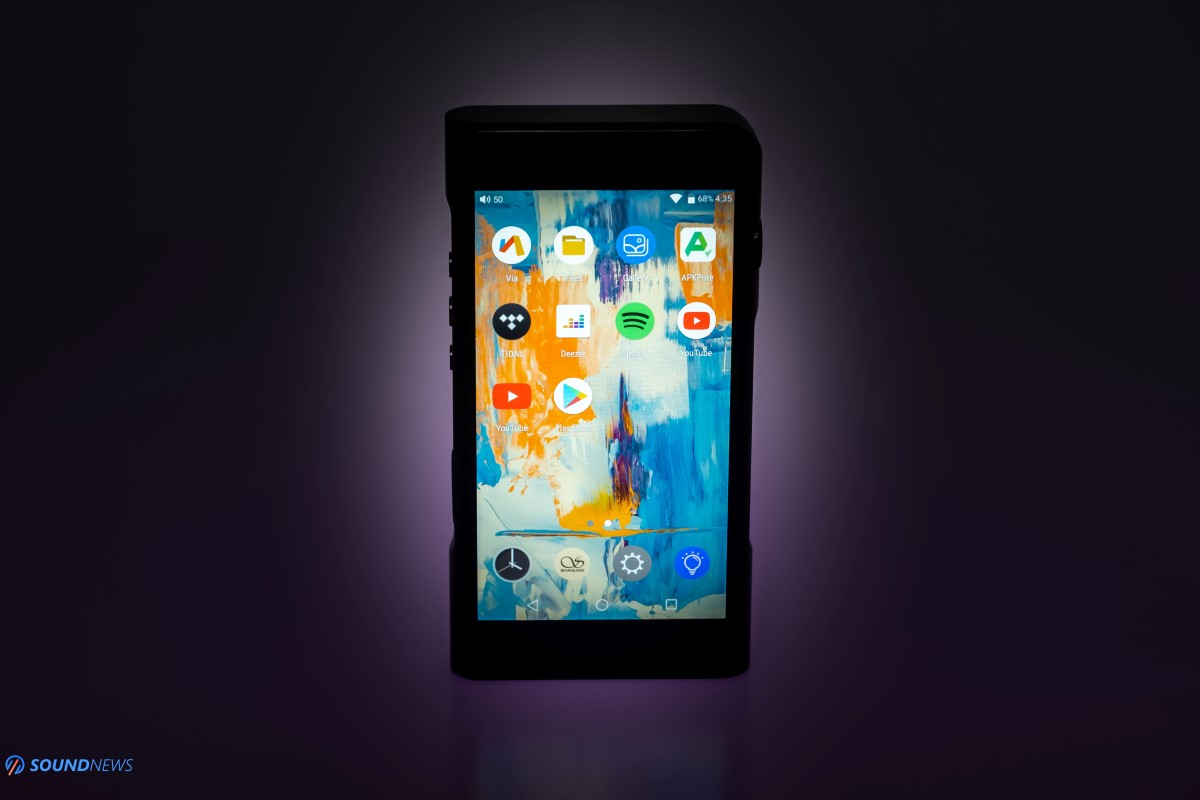
III. Connected to portable over-ear and on-ear headphones
I’m still that weird guy that walks and runs around using over-ear wired headphones, because I still find them cool and good sounding too. The rest of the travelers I meet in my journey use AirPods or other true-wireless earphones. I am picking sound quality over convenience any time of the day.
Sennheiser Momentum2 and Meze 99 Classics have a warm tonality and a slower and a mellower approach to music reproduction. With them everything is smooth, relaxed and really colorful. I can listen to them for about an hour tops and I’m already missing my linearity curve…When I’m connecting those to M6, I’m feeling like additional energy is coming out of those, the tempo is increasing in speed, finally there is a clearer leading edge, the sound is not only full bodied and heavier in tonality but also incredibly outlined and sharp. M6 is adding a much-needed kick and impact and is improving the driver control. The more I listen, the more I am realizing those dynamic drivers of Momentum2 and 99 Classics really like to have a stronger grip and a higher damping factor of a powerful amplifier. M6 did not completely transform those two headphones, but made them much more enjoyable in the long run, music is not half limp anymore and that’s probably the biggest improvement.
As with IEMs, portable over-ears or on-ear don’t need that much power to be driven. Even on the 3.5mm jack, 60 volume position was plenty enough and a lot of it remained. On balanced that volume would drop another 10 clicks, so yeah, again headroom felt bottomless and there is nothing stopping those drivers in achieving the best they can offer. Both of those again sounded very reminiscent as if connected to the mighty Big Rig™.
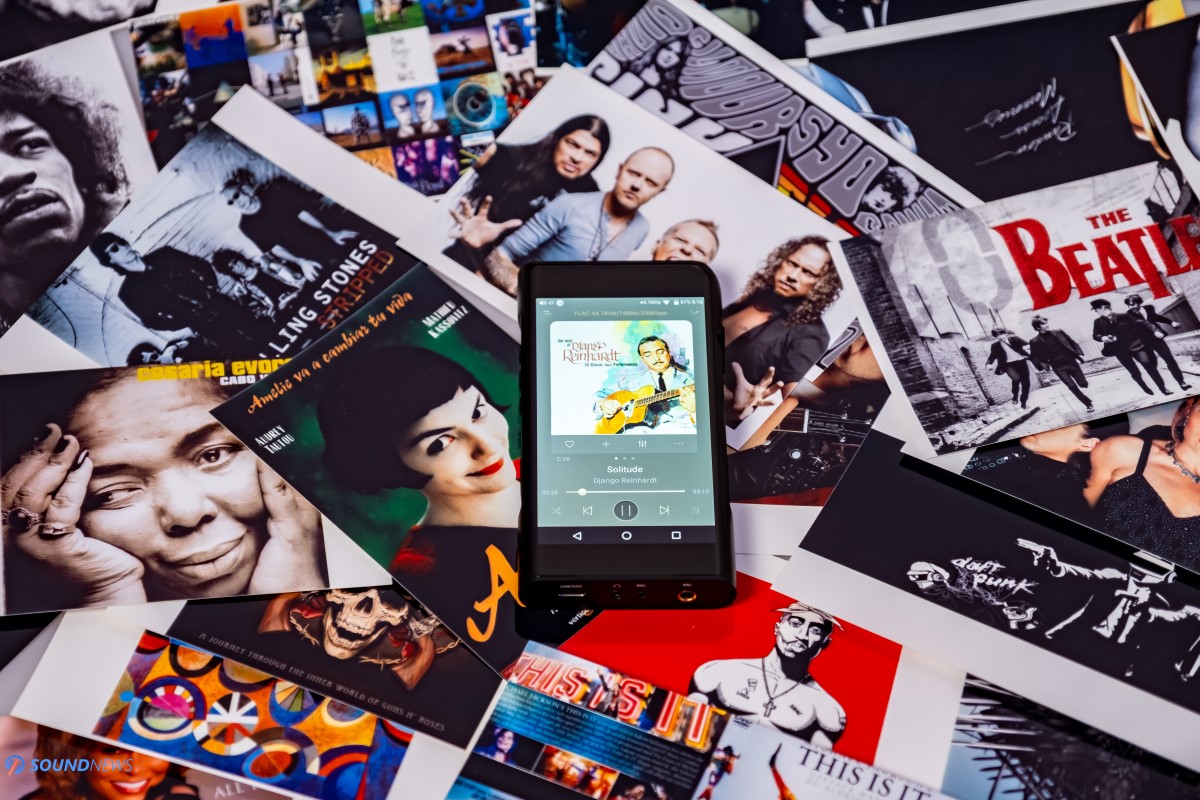
IV. Connected to desktop low sensitivity headphones
Shanling didn’t make this one for heavy duty planar-magnetic headphones, but what the hell, why not? Let’s do this!
Audeze LCD-1 is the most sensitive desktop planar I know, so even on the 3.5mm jack which offers half the power of M6, I was comfortable driving them at 70 volume and could go maximum up to 75 for half an hour. LCD-1 were driven to their fullest and their fast and energetic nature of LCD-1 was completely preserved. LCD-1 started throwing fast dynamics, they sounded jumpy with some of my faster material. Sadly, the soundstage size of LCD-1 remained the same, it the fault of the headphone and not of the M6. Depth was great and that 3D pin-point imaging remained intact. For an LCD-1 user, M6 can show the best the can, without staying in their way. M6 is not changing at all the overall tonality of LCD-1 and is letting it shine as much as it can. I’m glad that famous planar slam remained the same, LCD-1 sounded fast and engaging but also smooth and relaxing depending on the music I would listen to.
Moving on to Quad Era-1 and to the mighty Erzetich Phobos, again on the 3.5mm jack I could go as high as 85 out of 100. Still not maxed out and there is still plenty of volume left for good dynamics and decent headroom. Both sounded great and exactly as I remember them on bigger desktop equipment with just a minor hit in the bass slam and transient response. Anything else, like transparency, accuracy, dynamics and frequency extremes were there in spades and everything was presented clean, defined and natural, without a trace of shrillness or dryness.
Only when I moved to Hifiman Arya and Audeze LCD-4, it was clear that even the balanced outputs couldn’t tame these beasts. Volume was maxed and I still wanted for a lot more, dynamics went hide and seek and it just wasn’t a satisfactory experience. This last test was done mostly for fun, M6 wasn’t developed for such heavy loads and it shouldn’t be a surprise for anyone.
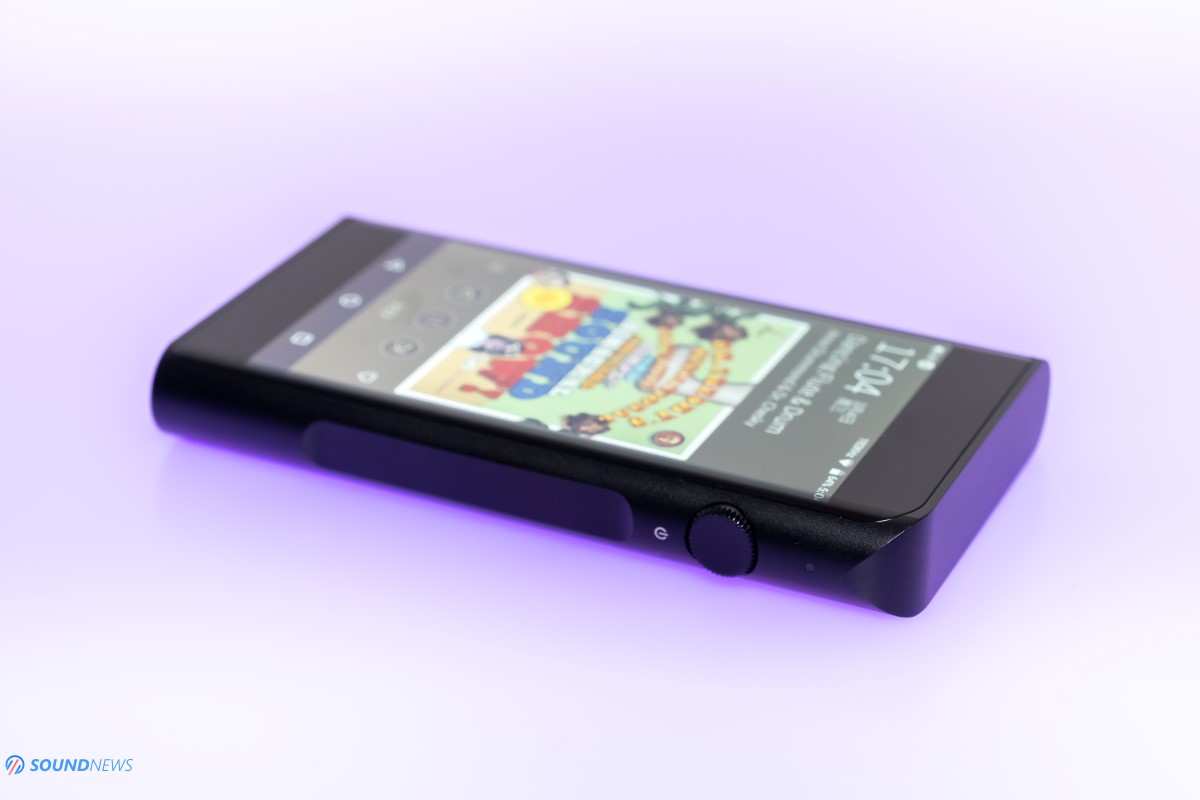
V. Connected to Wireless headphones and speakers
My KEF LS50W connected to it instantly, I was using my Tidal subscription and was streaming lossless music directly to the LS50W. Since my speakers are located in the middle of the apartment, the Bluetooth connection remained stable in any room I’d go and LS50W sounded exactly as they do via their internal DAC and streamer. LS50W connected via AptX since this is the best BT codec supported by them, a bit of frequency extension was lost together with a bit of resolution but anything else remained unchanged.
Moving to EH3NC Wireless headphones by FiiO, the sound was even better since both are capable of LDAC codec – supposedly the best BT codec of the moment. Connection was again stable and reliable. With M6 in my pocket and EH3NC on my head, I didn’t lose the signal in one hour walk outside, so no complaints here too.
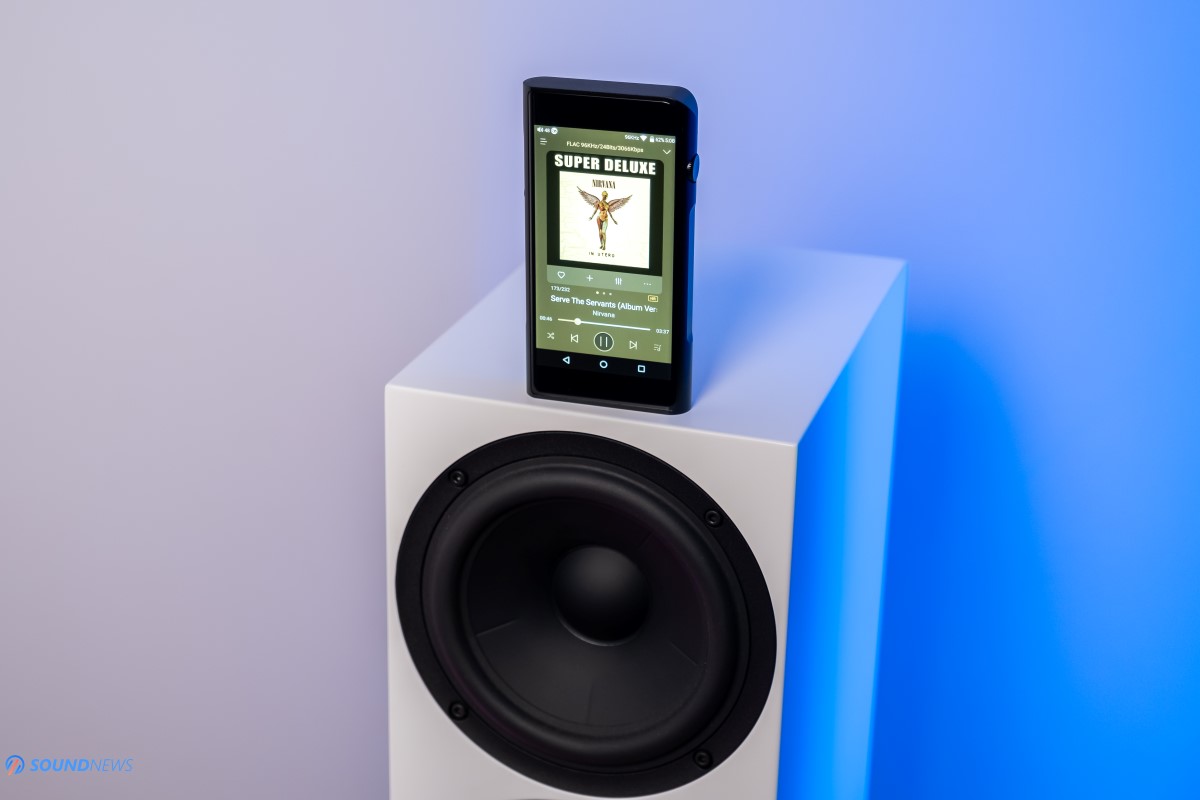
VI. Soundstage & Depth
Even without any burn-in, M6 presented itself as open and wide sounding and in this respect it plays with the best DAPs I’ve tested of late. The biggest eye openers were the FH7 in balanced connection and Erzetich Phobos which both sounded exceptionally open, layered and airy.
When I moved to balanced connection, since channel crosstalk is decreasing a lot, the left to right space is increasing. It is like the empty space between each note is increasing in size. While listening to crowded music like rock or metal, I can distinguish quite easily where everything is located. Even bad mastered and up-front music can be untangled and put on different shelves.
While listening to the newest record of Ozzy Osbourne – Ordinary Man (Ordinary Man, 2020), while the music is mastered decently, this record has limited dynamics in the bass and upper treble, still I was able so hear his voice outlined and separated from the rest of the performance. On a closed-in sounding source, this record would be unbearable. Please don’t listen to that song featuring Post Malone, it’s not worth your time. All in all, M6 sounded open and wide with every recording I would listen to and generally speaking all dual-AKM designs are sounding this way.
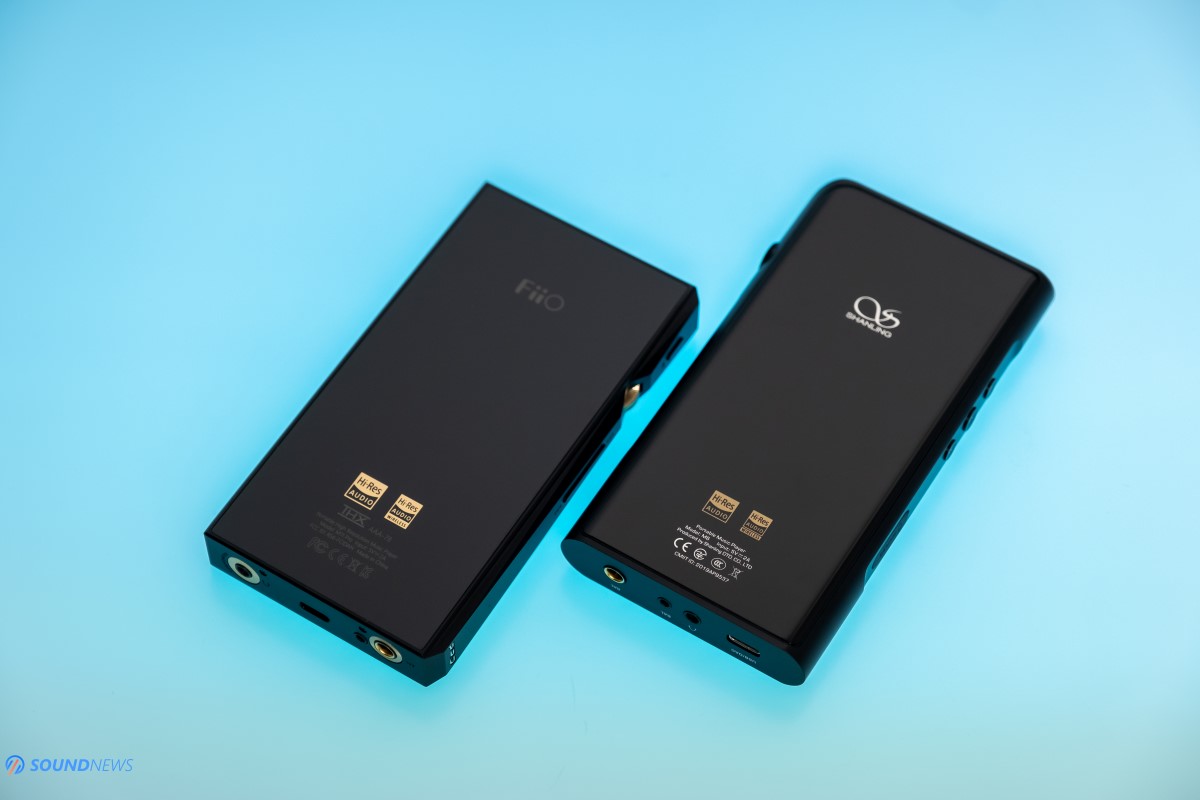
VII. Transient Response
Those capacitors from Elna and Panasonic were put there to store electricity and push it when a track would need an instant increase of dynamics and slam. In the first two days, M6 sounded a bit reserved and stiff in terms of speed, I felt it needs a bit of runtime to awake those fast transients. Two days later, M6 improved quite a lot and with the right tracks it is capable of pushing big amounts of air in an instant. M6 is a faster sounding DAP, for example Q1 is much slower in this regard to the point of being smooth sounding all the time. Another good example is FiiO M11 which costs just $50 less than M6, it sounds slower and less impactful and only sometimes will keep up its pace with faster sounding beats. M11 is considerably smoother, but it hurts the transient response quite a lot. Shanling M6 is much closer to faster sounding FiiO M11 PRO and M15 in this regard.
Even from the first second of Killing Strangers by Marilyn Manson (The Pale Emperor, 2015), it’s clear that M6 can present a serious thump. I want almost to lower the volume thanks to that crazy impact in the ear-drums. I do recommend trying this song even if you don’t like this genre, this one can be considered as a reference recording in testing out the slam with headphones and thump in the chest with speakers.
I don’t find M6 aggressive sounding at all, but since it has more of a reference tuning than a Hi-Fi tuning, some might find its super honest presentation tiresome in the long run with brighter sounding headphones. M6 is not trying in hiding anything so its upper treble is always fast and extended, I recommend using neutral or warm sounding headphones with it.
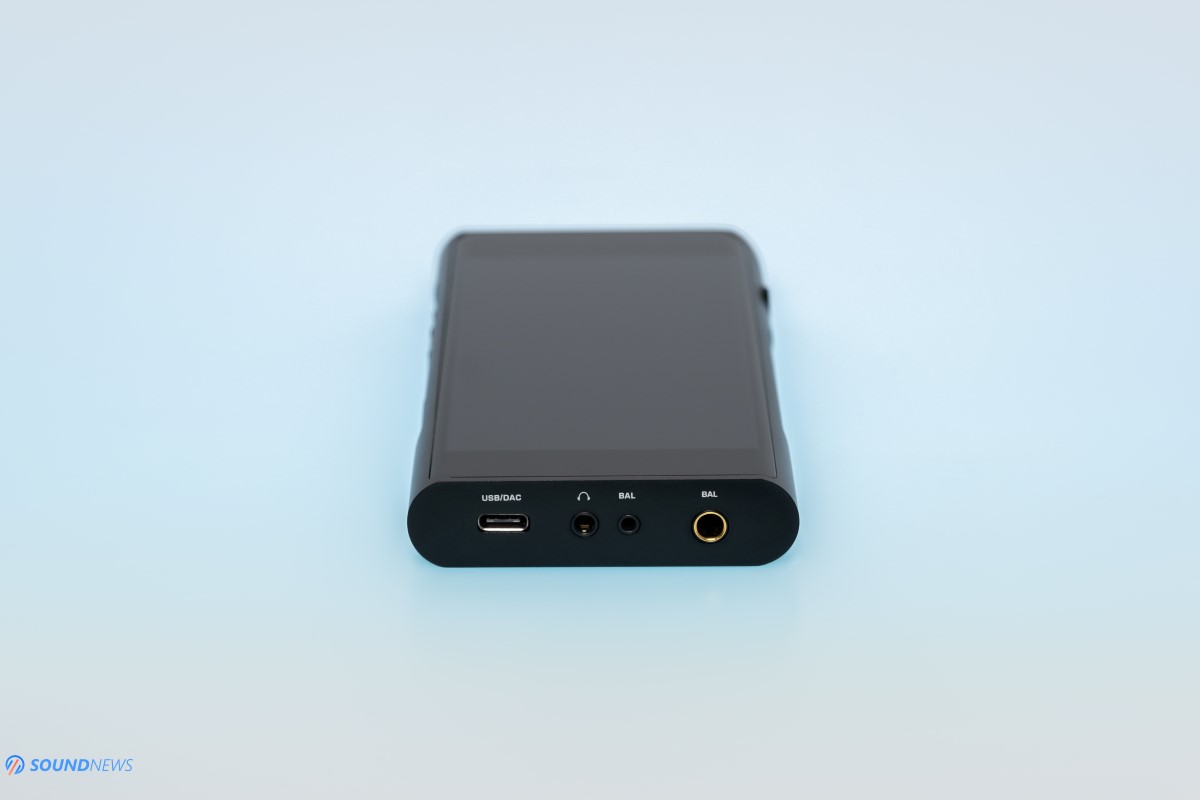
VIII. Detail Retrieval & Transparency
M6 is sounding clean and transparent and sincerely it is closer in performance to $650 FiiO M11 PRO than to $450 FiiO M11. Everything is at play here: dual mono AKM configuration, good crystal clocks, great FPGA coding, clean power filtering and obviously a meticulous selection of op-amps. I really glad manufacturers are keep going back to AD8397 thanks to its clean output and detailed presentation. M6 as a whole has a balanced sound across the board, it is not tilted towards warmth or brightness, but mostly towards cleanness and neutrality. Add a faster transient response and you can almost imagine the final result.
M6 has a good detail retrieval and a really good frequency extension. I fell layers in the bass, I’ve heard that guttural voice of Leonard Cohen with an incredible low-end, treble goes high in the sky and everything is presented in a transparent and clean manner.
There isn’t a veil across any track, unless you listen to really bad mastered music. I will just add that M6 is just by a hair shy of sounding as transparent and as detailed as a reference desktop DAC or as a reference DAP. It hangs out up-there with the big boys, but it is still not on the same level with the best.
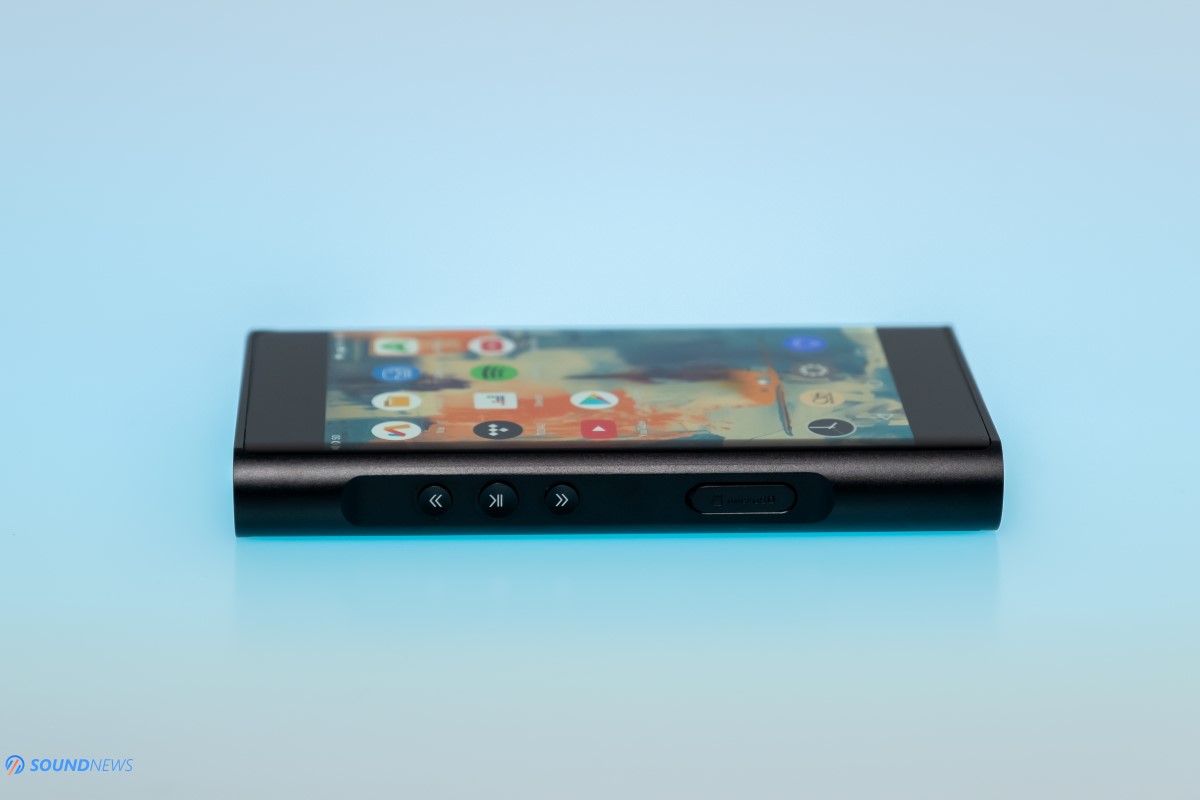
IX. Frequency Response
This will be a shorter chapter since, naturally Shanling went with a linear and extended frequency response without a hint of coloration. There are few brave manufacturers who wants to make ESS Sabre designs musical sounding and AKM designs as musical and super detailed, Shanling is definitely part of this group. Most of AKM designs will be all about smoothness, relaxation and roll-off in the treble. M6 on the other hand is vastly different, it choses a linear frequency response that is extended even past 16 kHz, I don’t hear a roll-off and everything is perfectly balanced across the board.
In this regard, M6 sounds so very close to that neutrality of FiiO M11 PRO and this comes as a praise for M6, since it is by $150 cheaper and yet as extended and as clean sounding.
Briefly I will just say that I experienced deep and rumbling bass that reached even the lowest octaves, midrange was sweet only when the song asked for it, voices sounded real and very distinctive and treble was among the cleanest one I’ve experienced in a DAP. If you chase an extended frequency response with a reference tuning at a really good price, then M6 is probably your best bet.
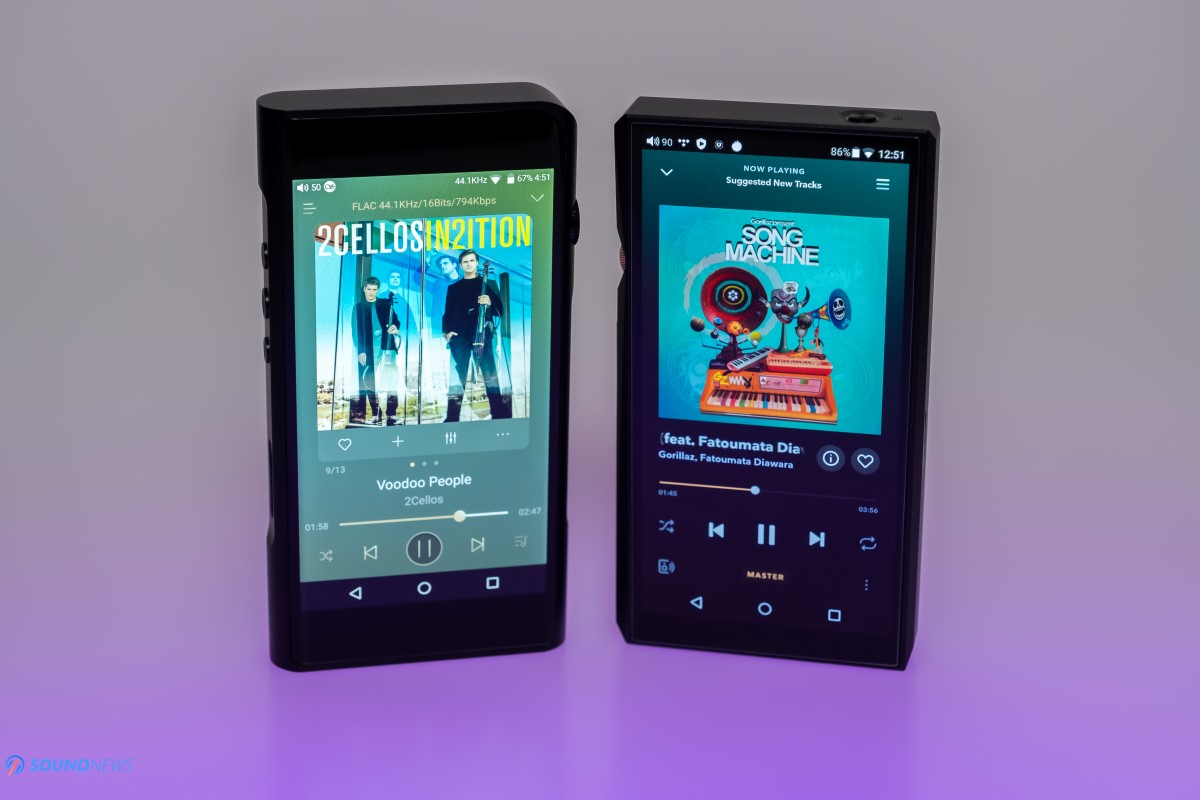
X. A Comparison
Shanling M6 ($499) VS FiiO M11 PRO ($649)
I will skip all the specs, features and so on and will focus mostly on sound quality and features.
In terms of features, FiiO has developed a slightly better music playback software, you can control M11 PRO by linking it with your smartphone and control it from there. M11 PRO has also that great Bluetooth Device Control that unleashed the full potential of Bluetooth headphones. M11 PRO is also MQA enabled and soon it will supported by 3-rd party apps like Tidal and others.
On the other hand, M6 is using a fully unlocked Android OS with Google Play Store enabled, meaning you can download any app you could possibly want. M11 PRO currently doesn’t support the Play Store and relies on the 3-rd party APK stores as APKPure and CoolAPK. All in all, to me a full Android experience is more important and am giving more points to the M6.
In terms of sound performance, they both are more alike than different. M11 PRO uses slightly better DAC chips (AK4497 VS AK4495), Shanling on the other hand are using better audio capacitors and more of them for an instant power delivery and a custom FPGA code.
In terms of amplification, FiiO went with THX chips which are known to offer a colorless sound, a reference type of tuning and the cleanest power as of right now. Shanling went with an excellent op-amp combination and the last output stage is based on clean and detailed sounding op-amps so in reality M6 is not that far behind at all.
I volume matched both of them using white noise and the MiniDSP EARS system, otherwise the one that is playing louder will impress the listener a lot more.
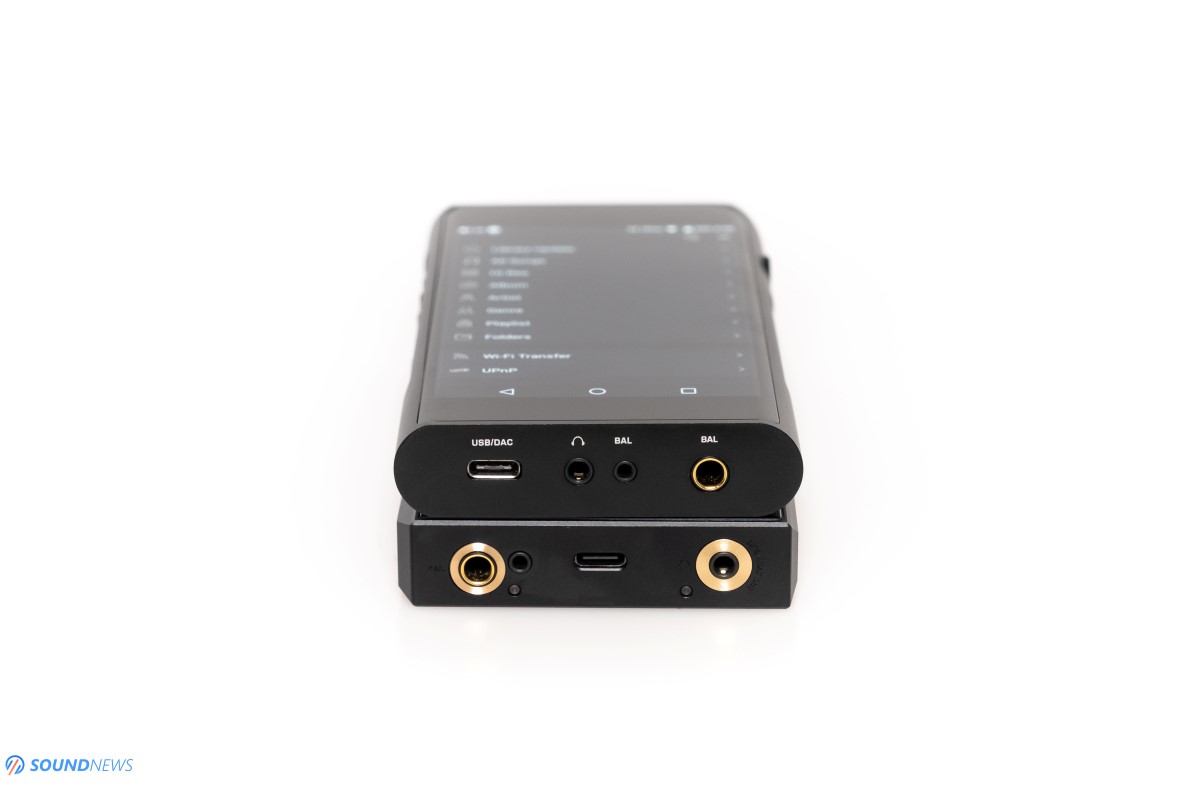
While listening to regular tunes, without audiophile proof sticker attached to them, the difference is negligible on the balanced outputs. Both are offering a clean and neutral type of sound, without any coloration, rises or dips in the frequency response. Both can play from sub-bass to higher octaves without a problem.
Only when I’m switching to some reference music (mostly from Reference Recordings, Chesky, StockFisch Records, & others) I’m hearing the stage just a tad deeper on the M6 by Shanling which will present the music slightly deeper and airy. M11 PRO on the other hand offered the last bit in terms of details, and I could easier sport the tiny movement in the room, some errors during recording or mastering. M11 PRO worked more like a magnifying glass for all those tracks. M6 was also detailed and technical, but not that impressive as M11 PRO. Both have slightly different skill sets but when I’m relaxed and I am not focusing on anything particular, they start sounding very alike. I am pretty sure that in a controlled environment, in a blind test, it would be almost impossible spotting one or the other. When it comes to raw power and control, M11 PRO is again slightly better and could drive heavier loads, but if you stick only to IEMs or portable headphones then both are more than capable of blasting your ear-drums to pieces.
I don’t have a regular FiiO M11 as it was replaced with an M11 PRO, but even now I can safely say that M6 will sound more detailed than that one, more transparent, more holographic and wide open, will surely hit harder offering a better slam and impact, will offer a better frequency response, will not roll-off that upper treble and will just feel cleaner and snappier sounding by comparison. Knowing that M6 is just by $50 more expensive than FiiO M11, I really don’t see a reason of going for a cheaper M11 at this point. For $50 more you are getting a better sound and a full Android experience.
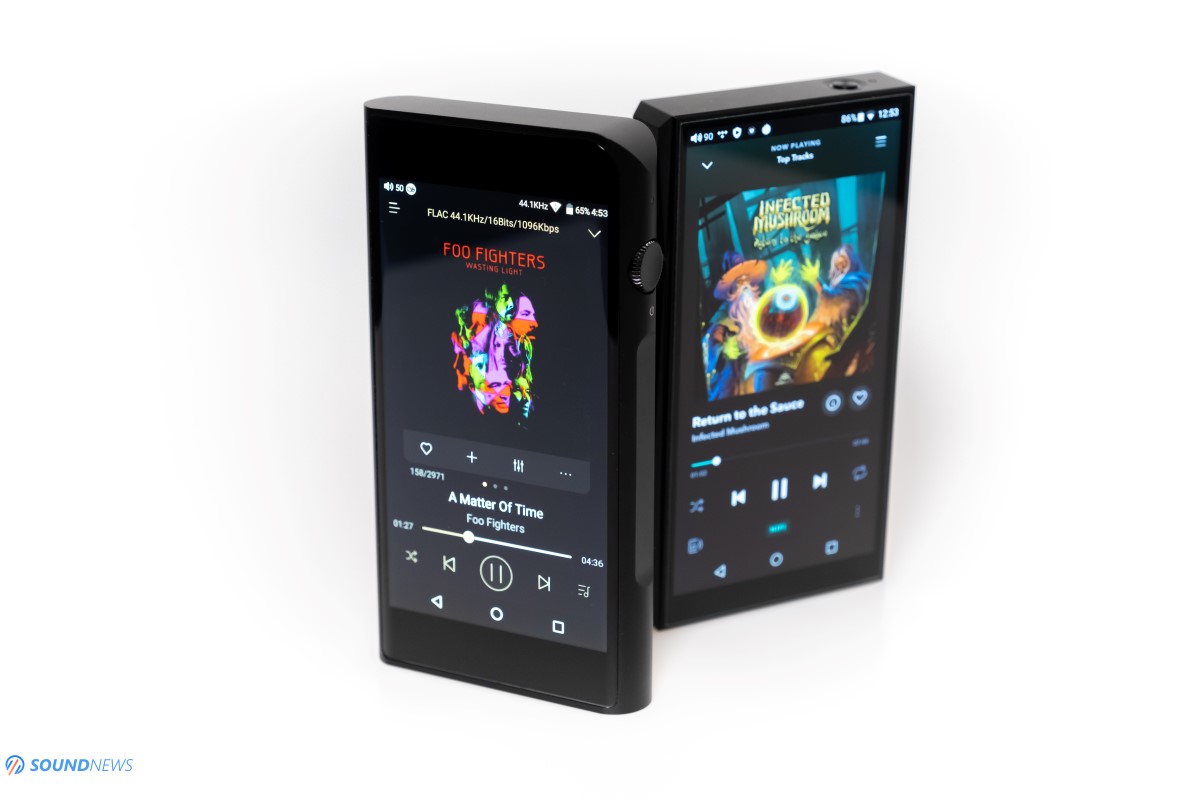
Conclusions
All in all, M6 didn’t embarrass itself at all and I was quite surprised by how important is the part selection and software coding that differentiates a good product from a great product. M6 is great by my standards and I have close to zero complaints with it.
Build quality is really nice, it has design cues from the rest of Shanling M line of DAPs. It looks sturdy and well put together. It moves decently fast and multitasking worked great with it. Full Android experience is amazing and I could install any app I wanted that its direct competition is not offering as of right now.
When it comes to sound performance, M6 stood out immediately with that clean, neutral, speedy and layered presentation that did show a high level of detail retrieval, an open wide soundstage and a speedy delivery of dynamics. M6 deserves to have a flagship status and it could easily be compared to pricier units any time of the day.
Shanling M6 review unit was provided by SMSL-Topping, you can buy it for $499 directly from their webstore or from their AliExpress store.
PROS:
- Unique design, cool and modern looking
- Fast response times even when multitasking
- Unlocked Android 7.1 with full Google Play Store support
- Easy to use GUI, ergonomic button placement
- Open wide soundstage, airy and deep sounding
- Great tonal balance across the board
- Great Bluetooth codec support
- Great micro-detail levels, clean and transparent sounding all the time
- Extended frequency-response, even past top octave
- Noise-less headphone out, works great even with sensitive IEMs
- Amazing transient response and driver control
- Crazy good price to performance ratio!
CONS:
- Only 32Gb of internal ROM memory
- Lacks any case in the package
ASSOCIATED EQUIPMENT:
- Sources: Xiaomi Mi9T Pro, Corsair One i160
- DACs: Matrix Audio Element X, KECES S3, Burson Conductor 3, Denafrips Venus
- DAPs: Shanling M6, Q1, FiiO M11 PRO, M15
- Headphone amps: Benchmark HPA4, SparkoS Labs Aries, Topping A50, xDuoo TA-30
- IEMs: FiiO FH7, FH1S, Moondrop Starfield & others
- Portable headphones: Sennheier Momentum 2, Meze 99 Classics
- Full-sized headphones: Audeze LCD-4, LCD-1, Erzetich Phobos, Hifiman Arya, Quad ERA-1
- Loudspeakers: KEF LS50W, Buchardt S400
- Interconnects: QED Reference XLR, Aune AL3 XLR
- Power Cables: Isotek EVO3 Premier (x2)
- Balanced Power Conditioners: PLiXiR Elite BAC 400, KECES BP-600
- PS: Big Rig™ = Matrix Audio Element X / Denafrips Venus + Benchmark HPA4 / SparkoS Labs Aries
